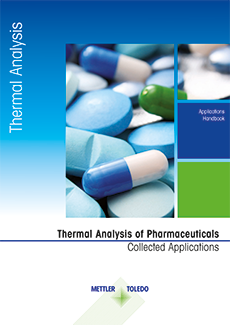Live Webinar: Thermal Analysis of Pharmaceuticals
Discover Key Techniques for Studying Pharmaceutical Substances
Program Overview
- Which thermal characteristics are studied in pharmaceutical industries?
- Introduction to thermal analysis techniques
- DSC applications – melting, purity, polymorphism, compatibility
- Thermo-optical applications – polymorphism and crystal growth
- TGA applications – weight loss on drying, shelf life, solvent content, hydration
- TMA applications – swelling of film coatings
- DMA applications – glass transition of surgical thread
- 21 CFR Part 11 Compliance
Thermal Analysis is a useful tool for investigating pharmaceutical substances for effects such as polymorphism, purity and composition, phase shifts, and stability. The four main techniques of DSC, TGA, TMA, and DMA are ideal for carrying out these investigations over a wide temperature range, from -150 to 1600 °C.
Important Effects and Properties Measured by Thermal Analysis
- DSC: The most important effects that can be analyzed are the melting point, melting range and melting behavior. This technique is also used to determine the heat of fusion, purity, polymorphism, the glass transition, and oxidation stability.
- TOA: Thermo-optical analysis is an auxiliary technique that uses visual observation to study melting behavior and polymorphism.
- TGA: The main applications are investigating evaporation, desorption and vaporization behavior, thermal stability, decomposition kinetics, and composition.
- TMA: Normally used to study the expansion or shrinkage of materials and the glass transition.
- DMA: The most sensitive method for characterizing the glass transition of materials.
Join the live webinar to discover more and get the opportunity to ask our experts your questions!
Expert

Angela Hammer
Dr. sc. nat. ETH
Dr. Angela Hammer received a Ph.D. in Analytical Chemistry (development of immobilized components for the use in ion-selective electrodes based on polyurethane membranes) from the Institute of Organic Chemistry at the Swiss Federal Institute of Technology in Zürich, Switzerland. She then joined Sika Technology AG in Zurich, Switzerland, as an analytical chemist. In 2007, she joined METTLER TOLEDO and has worked there since as an application specialist for Thermal Analysis. In her present position, she uses, teaches, and supports DSC, TGA, TMA, and DMA instruments for the METTLER TOLEDO’s Materials Characterization Group located at the head office in Switzerland.








